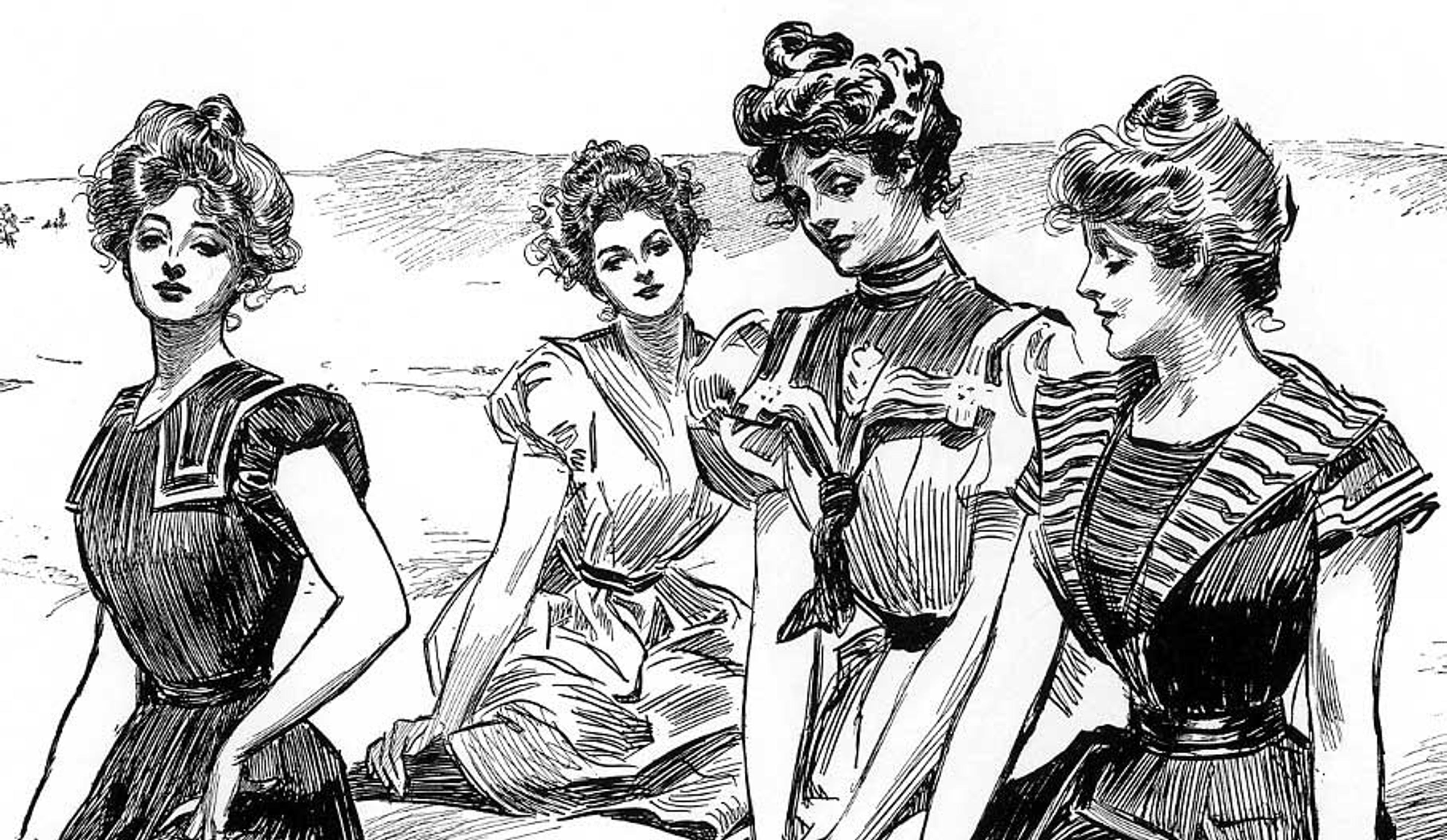This Edwardian necklace features the suffragette colors of green, white, and purple using peridot, seed pearls, and amethyst. The colors of the movement were described by Emmeline Parkhurst, the founder (along with her daughters) of the Women's Social and Political Union as: "Purple as everyone knows is the royal color. It stands for the royal blood that flows in the veins of every suffragette, the instinct of freedom and dignity...white stands for purity in private and public life...green is the color of hope and the emblem of spring." The slogan of the WSPU was "Votes for Women". When purple is interpreted as violet, the colors ordered in the sequence of green, white, violet form the acronym GWV for "Give Women Votes". This stunning necklace features an open floral design set with peridot and framed in pearls with a large amethyst drop flanked by pearl-studded scrolls. Though it features the suffragette colors, we can't say for certain that it is a suffragette necklace as there is jewelry from this period with the same colors that is unrelated to the movement.
thedetails
- Materials
15k gold (marked), seed pearls, 5.5mm peridot, 5ct amethyst
- Age
c. 1900
- Condition
Very good
- Size
pendant measured 1 1/2" length, 7/8" at the widest point; 16" chain
Need more photos?
Send us an email to request photos of this piece on a model.

Aboutthe
EdwardianEra
1900 — 1910
The jewelry tended toward airy lightness, often in the form of lacy filigree. The world was changing rapidly, but lots of the jewelry still reflected the Victorian ideals of decorum and femininity. Ancient Roman and Greek influences remained popular. “White” jewelry became popular as plentiful deposits of platinum were discovered in Russia and improved smelting technology made it possible for jewelers to work in the noble metal. Platinum was seldom used by jewelers in earlier years owing both to its scarcity and high melting point. The jewelry trade took advantage of its rigid strength to create opulent openwork settings for increasingly brilliant diamonds. The old European cut was perfected, rounder and squatter than old mine. This took stone-cutting one step closer to the mathematically perfect round brilliant cut, which is the most popular diamond cut today. The now-iconic square Asscher cut was patented in 1902. Hot on the heels of platinum, the alloy mixture that produces white gold was formulated and patented in 1915 in New York City. With Europe in the grip of WW1, the American jewelry industry was poised to become a world leader and innovator.
please note:Terms of Sale
Antiques can be returned unworn and in original condition within 10 days of delivery for an exchange or refund minus the cost of shipping. Once a piece has been altered, including ring re-sizing, it is FINAL SALE.


